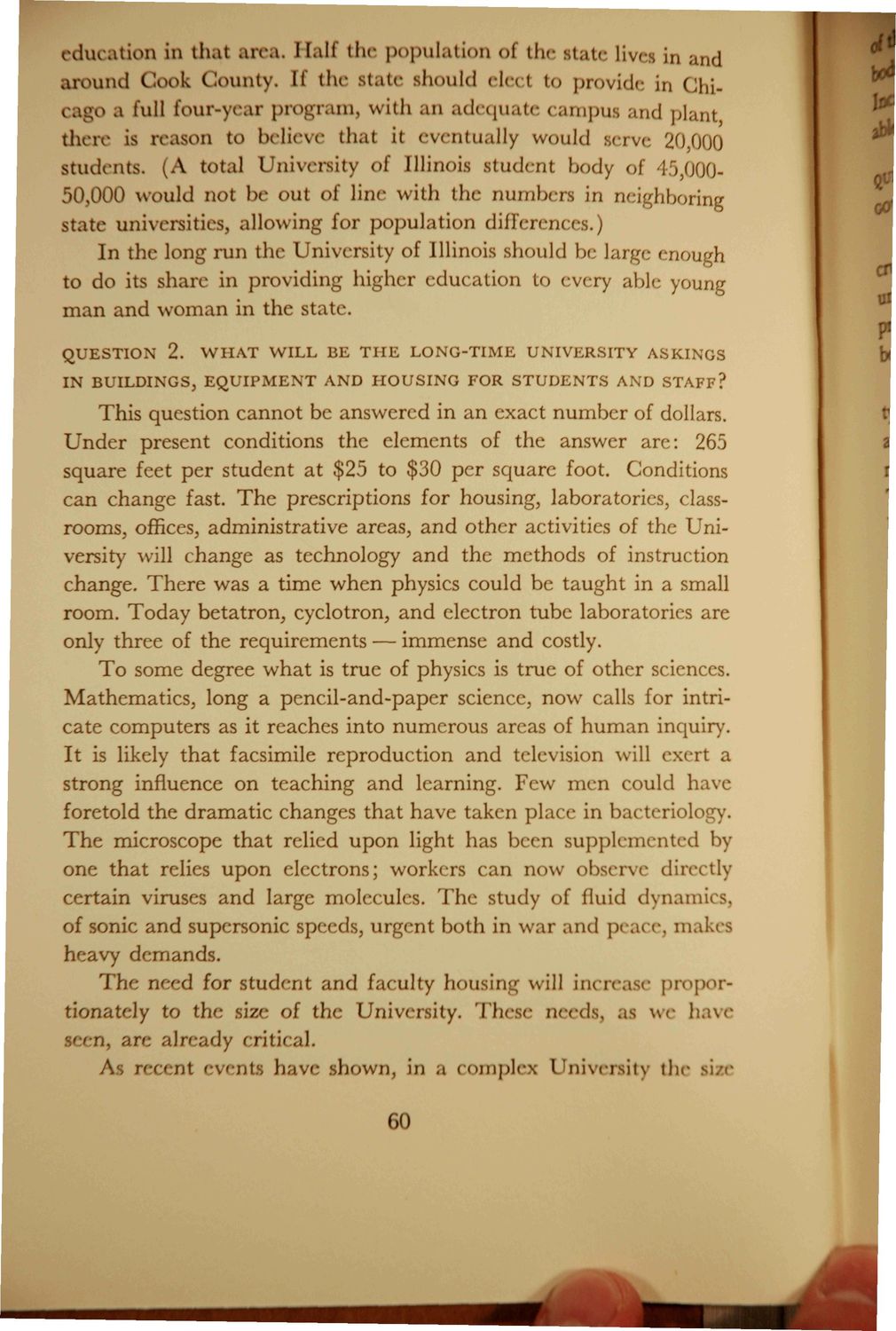| |
| |
Caption: Book - Four-Year Report of UI President (1950)
This is a reduced-resolution page image for fast online browsing.

EXTRACTED TEXT FROM PAGE:
education in that area. Halt the population ol the state lives in and around Cook County. If the state should ele< t to pi vide in Chi. - ago a full four-year program, with an adequate ( .nnpus and plant there is reason to believe that it eventually would serve 20,000 students. (A total University of Illinois Student body of 45,00050,000 would not be out of line with the numbers in neighboring state universities, allowing for population differences.) In the long run the University of Illinois should be large enough to do its share in providing higher education to every able young man and woman in the state. QUESTION 2 . W H A T W I L L BE T H E L O N G - T I M E UNIVERSITY ASKINGS IN BUILDINGS, E Q U I P M E N T AND H O U S I N G FOR S T U D E N T S AND STAFF? This question cannot be answered in an exact number of dollars. Under present conditions the elements of the answer are: 265 square feet per student at $25 to $30 per square foot. Conditions can change fast. T h e prescriptions for housing, laboratories, classrooms, offices, administrative areas, and other activities of the University will change as technology and the methods of instruction change. There was a time when physics could be taught in a small room. Today betatron, cyclotron, and electron tube laboratories are only three of the requirements — immense and costly. T o some degree what is true of physics is true of other sciences. Mathematics, long a pencil-and-paper science, now calls for intricate computers as it reaches into numerous areas of human inquiry. It is likely that facsimile reproduction and television will exert a strong influence on teaching and learning. Few men could hav foretold the dramatic changes that have taken place in bacteriology. T h e microscope that relied upon light has been supplemented by one that relies upon electrons; workers can now observe directly certain viruses and large molecules. T h e study of fluid dynamics, of sonic and supersonic speeds, urgent both in war and peace, mak< heavy demands. T h e n d for student and faculty housing will increase pi portionately to the size of the University. These nee< , we have en, are air >dy critical. As rc<' nt events have shown, in a complex University the si 60
| |